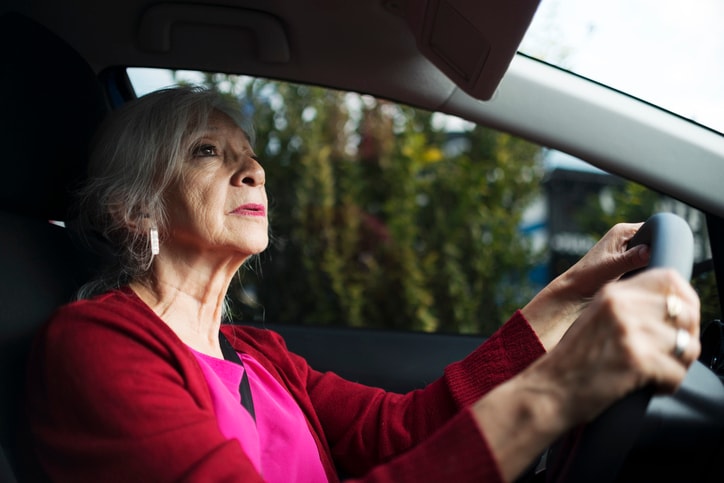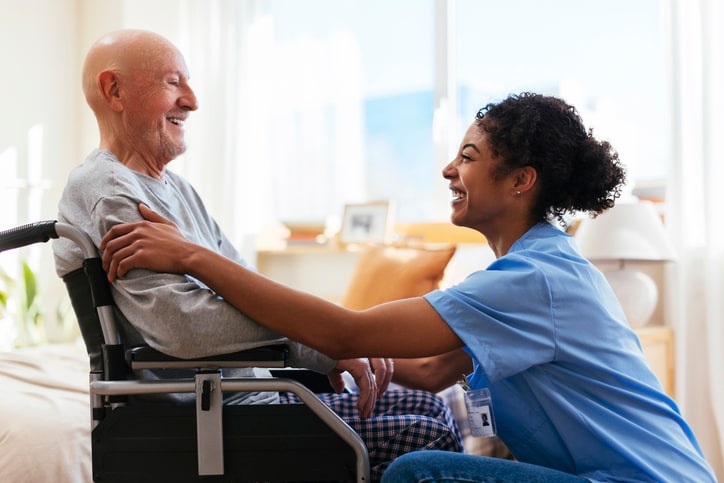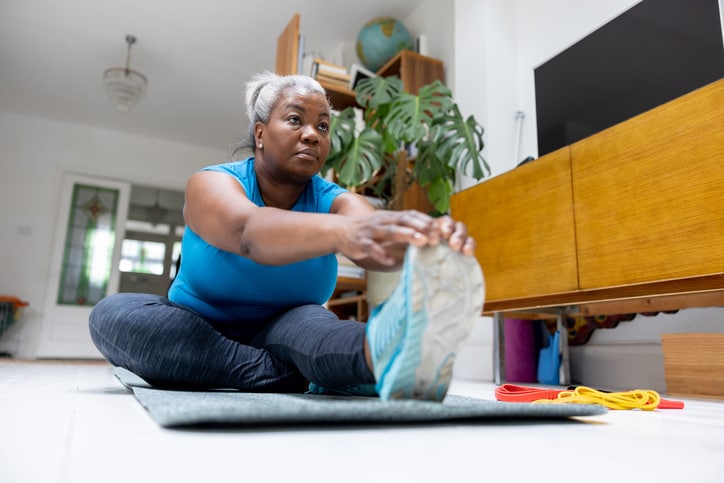Anyone who’s cared for a loved one with Alzheimer’s disease or other type of dementia knows the worry you can have for their safety. Wandering, forgetfulness, difficulty with depth perception and coordination and balance issues can not only lead to falls and other serious injuries for a person with dementia, they can also put a household at risk, says Dr. Tara Liberman, associate chief of the Division of Geriatrics and Palliative Medicine at Northwell Health in New Hyde Park, New York.
Dementia-proofing your home can go a long way toward easing your anxieties and keeping your loved one safe. Try these strategies for a secure environment:
Stairways and halls
- Install handrails on both sides of a stairway and show the person with dementia how to hold both rails at the same time to reduce the chance of a fall, recommends the National Institute on Aging. “Usually in mild to moderate stages of dementia, they can be directed to utilize handrails,” Liberman says.
- Make sure the stair treads are deep enough to support a whole foot, advises the AARP.
- Add glow-in-the-dark tape or lighting along the edges of steps so they’re easier to use at night or on darker days.
- Consider adding a ramp.
- Keep stairs and halls clutter-free and tidy to minimize tripping.
- Install wall sconces and other forms of lighting to brighten paths inside the home.
- Remind the person with dementia not to carry items while walking. They can cause additional balance problems and larger loads can block a person’s view of any objects that might be in the way.
Kitchen
- Consider having gas-burning stoves and ovens disabled by a professional, especially if the person with Alzheimer’s is in the early stage and still living alone.
- Remove sharp objects and electrical appliances from drawers and countertops so that the person can’t hurt themselves or others, says Liberman. Consider placing them in a locked cabinet or drawer. Some of the same products used to keep babies and toddlers out of cabinets can be used.
- Avoid using doormats and small throw rugs. They’re easy to trip and slip on.
- Keep electrical wires and extension cords tucked away and out of areas where someone will be walking.
- Keep kitchen cleaning supplies locked up.
- Consider installing temperature-controlled water faucets; dementia can dull sensitivity to temperature.
- Unplug the microwave.
- Make food easy to reach so that a stool is not needed.
- Depending on a person’s stage of disease and eating ability, provide safe snacks that won’t increase the chances of choking. Your doctor or a nutritionist who has worked with older patients can help you find the best options.
- Whether inside or outside, keep tobacco and alcohol products locked up, too. And keep an eye on those with dementia during large family gatherings where they can wander around drinking out of unmanned wine glasses and beer cans or bottles. Alcohol consumption is not recommended for dementia patients and can exacerbate symptoms.
Bedrooms, living rooms, and other often-used spaces
- Remove aging wall-to-wall carpet that is uneven, lumpy, or curling up on the edges. Make sure wall-to-wall rugs or carpet you do use are firmly tacked down.
- Avoid using throw rugs or area rugs. They’re stumbling hazards.
- Put no-slip strips on wood and tile floors. You can purchase them in a hardware store.
- Install automatic lights that turn on when a person enters a room. “The motion sensor type are easier for people with dementia,” Liberman says. Clap-on lights can be used in early stage Alzheimer’s, too.
- Don’t leave piles of clothes, books, or other objects on floors (they can cause tripping).
- Place night lights and light switches near the bed and keep a flashlight handy if the power goes out.
- Keep a phone by the bed and near favorite sitting areas in the living room or family room.
- Outfit the bed with railings so the person won’t roll out of bed or fall in the night. Or replace a regular bed with a hospital bed with railings and adjustable reclining features.
- Look around the room and consider simplifying or “un-decorating.” For someone with dementia, busy wallpaper patterns and clutter can be confusing and wall mirrors can make it harder to process what is real and what is a reflection.
- Large glass doors and windows can be perceived as open space by dementia patients, who may experience visual impairments. Put removable stickers, bright tape or decals on them, the AARP recommends.
- Remove swivel chairs and chairs will wheels (like those used in offices); they can be hazardous.
- Invest in a recliner that lifts a person up and helps them get out of the chair.
- You can buy tech-savvy cushions and floor sensors that alert you when a person is getting up from a chair and moving around.
Bathrooms
- “Handrails in the bathroom — in the shower and around the toilet — are very important. Falls in the bath are very common,” says Liberman. People with vascular dementia who’ve had a stroke and have reduced mobility, balance, and arm function are especially at risk.
- Install an elevated toilet seat. “Getting down to the level of a toilet seat is very difficult for an older adult,” Liberman explains.
- Buy a shower chair to reduce the chance of falls in slippery shower stalls and tubs. A shower chair can also make it easier for caregivers to help bathe people with dementia.
- Consider installing a walk-in tub with a door so that the person does not need to step over the side of the tub.
- Keep surfaces wiped and dry to reduce slips. If a rug is used in the bathroom, make sure it’s well-affixed.
- Use night lights in the bathroom. There are also glowing bathroom light switches available, and motion-activated lights that can be hooked onto the inside of the toilet bowl and light up the seat.
- Set the hot water heater so that bath and sink water won’t scald.
- Lock up medicines, vitamins, razors, and bathroom cleaning supplies.
- Consider removing locks from bathroom doors so a person can’t get locked in alone.
General household safety
- Inside the house, check to be sure all windows are securely locked.
- Keep lights on at night at all outdoor entrances to your home. Make sure they are bright enough and placed to minimize shadows, which some people with Alzheimer’s or dementia can perceive as burglars or other threats.
- Keep pathways leading up to the house well-lit at night and fix any broken or buckling brick, cement or stone steps and walkways.
- Check to be sure doorways can accommodate walkers and wheelchairs. Even if your loved one doesn’t use one now, they may need one in the future.
- Install an alarm system that alerts you when someone inside of the house tries to go out. “People are more active in the beginning of dementia and are more mobile and the patient can wander,” Liberman explains.
- Many families use lifelines which can be worn around the wrist like a watch or necklace-style. There are different types, including ones that go off automatically when someone falls, voice-activated styles, and some that require the wearer to activate them. “There are also wander guards that you can place around someone’s ankle. They can alert someone if a patient leaves the house,” says Liberman.
- Cover and lock your outdoor barbecue grill.
- A fenced-in yard with a locked gate can offer outside time in a safe setting.
- If you have a swimming pool, keep it fenced and locked to prevent accidental drowning. Do the same for hot tubs.
- Use a pool alarm with an electric sensor that will trip a loud, pulsating alarm inside and outside of the house when anyone enters the water, the AARP recommends.
- Lock up outdoor chemicals and supplies, including grilling tools, power tools and hand tools, paints and turpentine, bleach, mothballs, and insecticides.
Contact the Alzheimer’s Association for local resources that can help.





